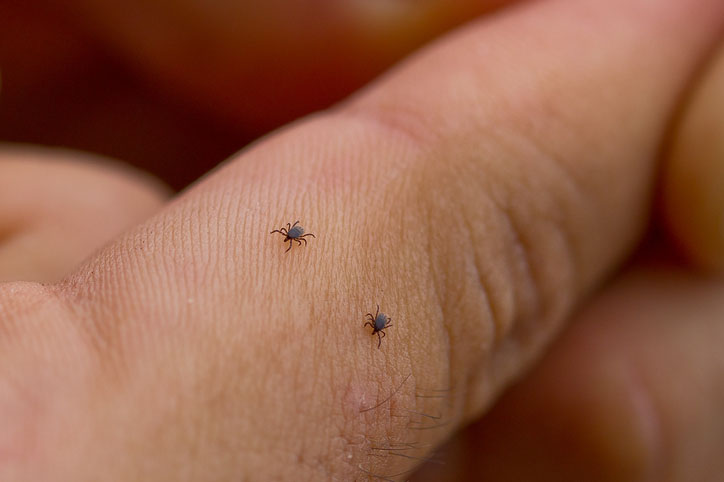Colony Monitoring of Laboratory Animals
- Laboratory Animals
- Regulatory Requirements for Laboratory Animals
- Animals Used in Research
- Management of Laboratory Animals
- Colony Monitoring of Laboratory Animals
While most commercially reared rodents, some rabbits, and relatively fewer dogs, cats, and primates can be obtained as SPF animals, resident animal colonies must be monitored for naturally occurring disease as a measure of the effectiveness of the prevention and control program. Investigators should be informed regularly as to the health status of their research animals. In addition to monitoring for infectious disease, a quality assurance program should monitor for genetic integrity, especially for inbred mouse strains that are bred and maintained in the research facility, as well as for environmental factors (quality of feed, water, and bedding; efficacy of sanitation programs; air handling and quality; lighting; noise; etc) that can affect colony health.
Colony health monitoring consists of a defined program of regular physical and laboratory evaluations of animals within a unit, as well as a morbidity and mortality reporting system that enables timely identification of potential problems. Thorough investigations of illnesses, deaths, and unusual experimental outcomes in a colony are essential components of such a program. For selected physiologic data of some laboratory animals, see Selected Physiologic Data of Laboratory Animals a.
While certain general principles apply, a health monitoring program must be specifically developed for each species maintained in a facility. For example, generally, all primates are quarantined and isolated on arrival. Physical examinations, tuberculin testing, and baseline hematologic and other clinical pathologic tests should be performed. In addition, serologic evaluation for Macacine herpesvirus type 1 (formerly Cercopithecine herpesvirus type 1, Herpervirus simiae, B virus), simian retroviruses, and other specific agents may be performed, depending on the species of primate. Primates should be released from quarantine only when both the health status and suitability for use are determined. Furthermore, primates should have regular health surveillance screens, each consisting of defined elements. Depending on the nature and value of the colony and research use, screenings may range from quarterly to semiannual or annual in frequency. (Also see Nonhuman Primates.)
For colony-bred rats and mice, programs for disease monitoring can consist of any or all of the following: vendor surveillance, quarantine and isolation evaluation, ongoing clinical and postmortem evaluation during the course of studies, sentinel animal programs, and evaluation at termination of the study. In addition, all transplantable tumors, cells, or other biologic products destined for animal passage should either be screened for murine and zoonotic pathogens or colony management practices used to appropriately isolate animals receiving these materials. Of particular concern to colony health is the occasional and justifiable need to obtain animals from less well-defined sources, such as an investigator’s colony at another institution or other nonapproved source. The presence of infectious agents either in transplantable tumors or noncommercial animal sources can pose a substantial threat to resident colonies and personnel. Colony monitoring of rodents is typically based on serology, bacteriologic, and parasitic evaluations supported by the evaluation of environmental, fecal, and fur samples through the use of molecular biologic techniques such as PCR.
Although the use of filter top caging technology to impede cage-to-cage transmission of infectious agents in rodent colonies has resulted in a dramatic reduction in enzootic disease transmission and protection of naive animals from epizootics, it has created challenges for sentinel programs. Because most diseases of laboratory rodents do not cause clinical signs and there can be high and unpredictable turnover of research rodents, health surveillance programs are traditionally based on the premise that infectious agents can be transmitted to sentinels, which can then be tested for a variety of pathogens. This provides assurance that the research colonies are free of specific pathogens and alerts the personnel to the presence of infection. Before the widespread use of filter top caging, dedicated sentinels in open cages were readily exposed to airborne fomite particles and true aerosols from infected animals in the colony.
The same filter tops that protect colony animals from contagion, however, also hinder the exposure of sentinels to these same agents. For many reasons, dedicated sentinels are preferred over the alternative of monitoring colony rodents. State-of-the-art sentinel programs have thus come to rely on the regular exposure of sentinels to soiled bedding as the means of exposure to colony animals. This indirect exposure has been found to be suboptimal for the detection of many bacterial pathogens, agents transmitted by true aerosol, and fur mites. Agents that are shed intermittently, those with a self-limited, single window of shedding, those that require a high dose to be infective, and those that may deteriorate rapidly are difficult to detect by exposure to soiled bedding. The sentinels themselves may add confounding influences if their age or genetic background makes them relatively resistant to infection.
The primary contemporary challenges to the health of research rodents—particularly mice—are the noroviruses, parvoviruses, Helicobacter spp, pinworms, and fur mites that infect or infest colonies, perturbing biologic processes and introducing variation into research data. For the most part, these agents, along with mouse hepatitis virus , are thought to have gained entry to research colonies largely via the trading of live mice of unique genotypes between institutions. The situation has been complicated by the inability of quarantine programs to reliably detect these agents. However, there is a body of substantial, compelling, anecdotal evidence that nonsterilized diets may be a source of introduction for some pathogens (eg, mouse parvovirus). Murine norovirus has been shown to be the most widespread virus in domestic mouse colonies. The virus likely existed in research mice for decades, but it was not described until 2003. Mouse parvovirus was definitively discovered 10 years earlier. These viruses may persist for lengthy periods in mice and can contaminate and remain infectious in the environment for months, making them ideally suited to persevere in colonies kept in filter top cage systems.
Selected Physiologic Data of Laboratory Animals a
|
Species |
Gestation Period (days) |
Litter Size |
Age and Body Weight at Sexual Maturity |
Usual Life Span (yr) |
Average Body Temperature (°C) |
Heart Rate (bpm) |
Water Consumption (per day)b |
|
Mice |
19–21 |
6–10 |
6 wk (20–30 g) |
1–3 |
37 |
310–840 |
4–7 mL |
|
Rats |
21–23 |
6–14 |
2−3 mo (0.2–0.3 kg) |
2–3 |
37.5 |
300–500 |
30 mL |
|
Guinea pigs |
59–72 |
1–4 |
3–4 mo (0.4–0.5 kg) |
3–4 |
38 |
230–380 |
150 mL |
|
Hamsters, golden |
15–18 |
4–10 |
2 mo (85–110 g) |
2–3 |
37 |
280–410 |
30 mL |
|
Gerbils |
25 |
2–9 |
3 mo (60–100 g) |
3–4 |
39 |
250–360 |
4 mL |
|
Rabbits |
30−33 |
4–12 |
5–6 mo (3–4 kg) |
5–7 |
39 |
200–300 |
300–700 mL |
|
Squirrel monkeys |
150 |
1 |
3–5 yr (0.6–1.1 kg) |
16–20 |
39 |
300–380c |
70–110 mL |
|
Rhesus monkeys |
164 |
1–2 |
3–4 yr (5–11 kg) |
15–30 |
38 |
120–180c |
0.2–1 L |
|
Chimpanzees |
227–235 |
1 |
7–10 yr (40–50 kg) |
20–30 (males), 30–40 (females) |
37 |
60–120c |
2.2–2.7 L |
|
Baboons |
164–186 |
1 |
4−7 yr (11–30 kg) |
30–40 |
39 |
95–145c |
1–1.5 L |
|
a See also Features of the Reproductive Cycle. |
|||||||
|
bTypical of an average adult; varies with body mass index, number of animals per cage, moisture in feed, temperature, etc. |
|||||||
|
c Results obtained under anesthesia. |
|||||||
Resources In This Article
- Laboratory Animals
- Regulatory Requirements for Laboratory Animals
- Animals Used in Research
- Management of Laboratory Animals
- Colony Monitoring of Laboratory Animals





